We were in our favourite local Vietnamese restaurant recently and, while eating a delicious bowl of Bún Bò Chân Giò Huế – Beef, Pork Hock, Meat Balls in a vermicelli noodle soup (Bún means vermicelli and the dish originated in Huế, a coastal city in central Vietnam that used to be its capital), the restaurant staff brought out a jar containing pickled garlic to be used as a condiment. It was delicious – it added another dimension to the dish – a zap of sour garlic with just a hint of spice from the chilli infused vinegar. It’s a really popular condiment and apparently some of the restaurant’s customers will devour the whole jar when it’s brought to the table. We figured it probably wasn’t too difficult to make ourselves so we did some experimenting and, indeed, it’s a really easy recipe.
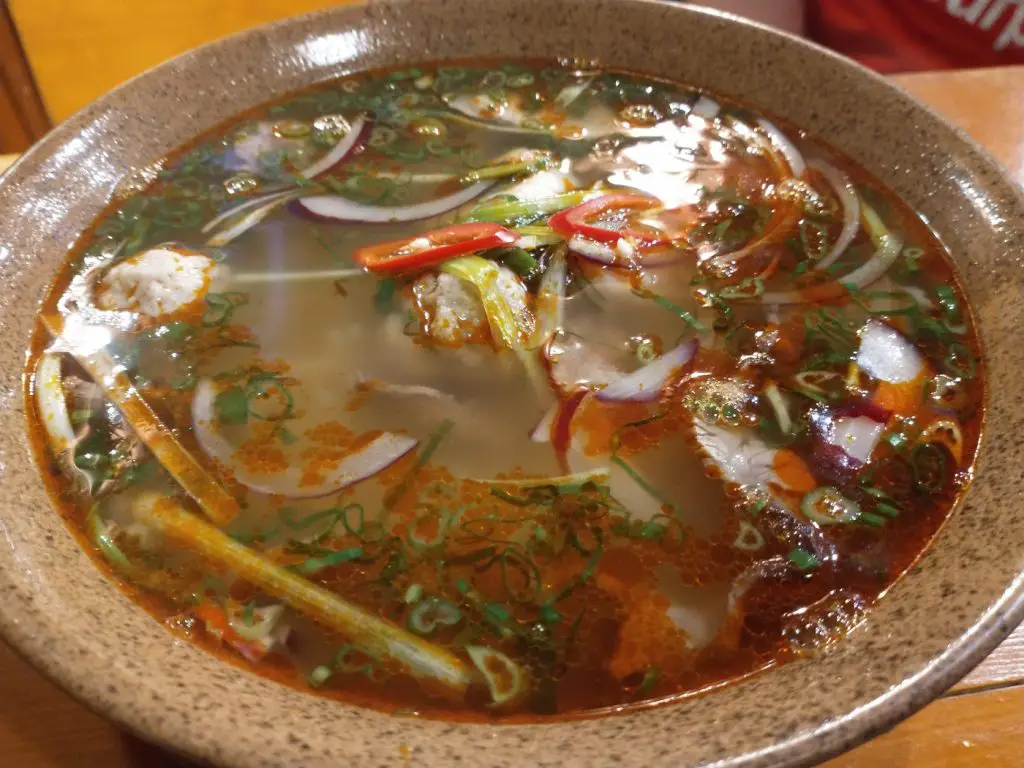
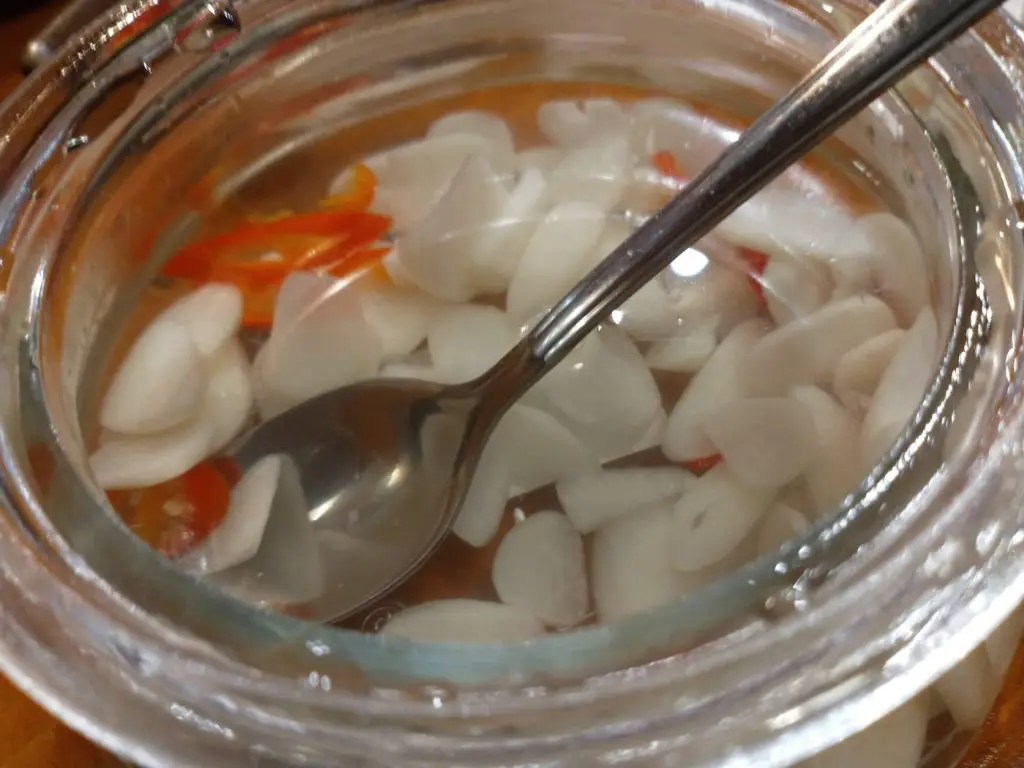
We had grown a bunch of garlic earlier in the year – planted in the late autumn we harvested it mid-summer. We also have a habit of keeping empty jars for preserving purposes, so had most of the ingredients and equipment to hand. It’s very flexible to make and the quantities in the recipe really depend on the size of your container. You will need a clean empty jar – you can use any old jar. Just wash it out thoroughly and fill it with boiling water, which will make sure it’s clean enough to store pickles, then let it cool down. Our jar was around 300 ml capacity.
Vietnamese Pickled Garlic Recipe
Ingredients
Several bulbs of garlic (the quantity will depend on how large the bulbs are and how finely you wish to slice it)
Two red chillies
White vinegar (you can use rice vinegar if you are feeling decadent but the garlic has a strong flavour and we feel it would dominate the subtle flavour of the rice vinegar)
2tsp white sugar
1/2 tsp salt.
Method
Peeling the garlic is the most time-consuming part of this job. Garlic is one of the stickiest substances known to human kind but you don’t realise this until you start peeling lots of it.
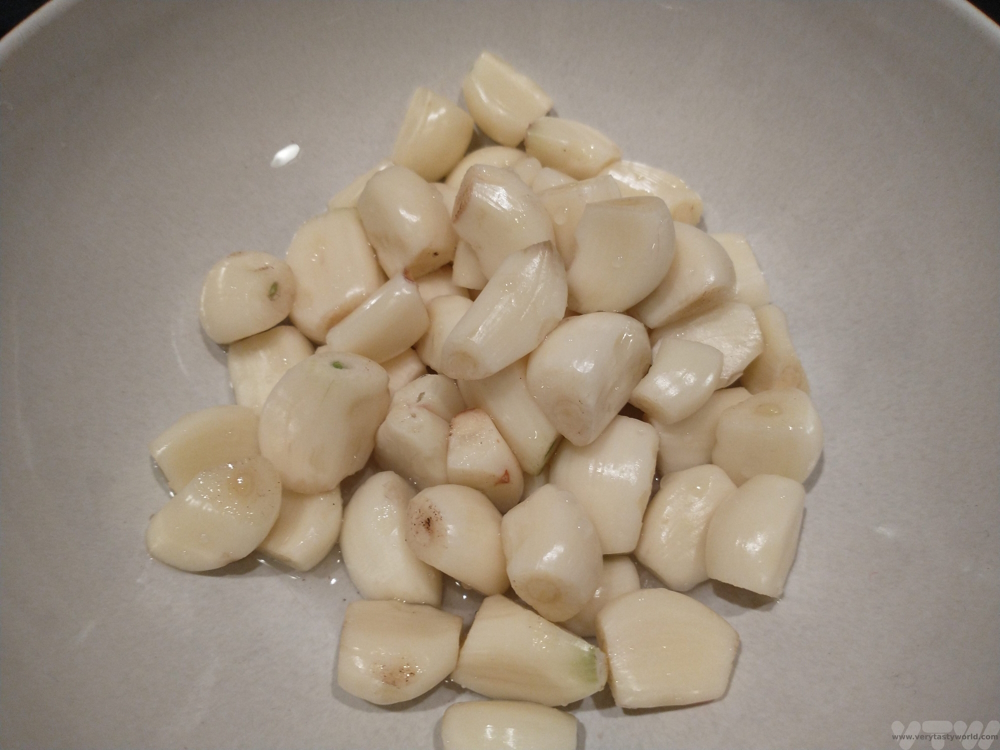
Once peeled, you have a number of choices. You can keep the garlic cloves whole, you can slice them with a knife or you can slice them wafer-thin using a mandolin. We prefer the very thinly sliced garlic because when you add it as a condiment the flavour enhances rather than dominates the food.
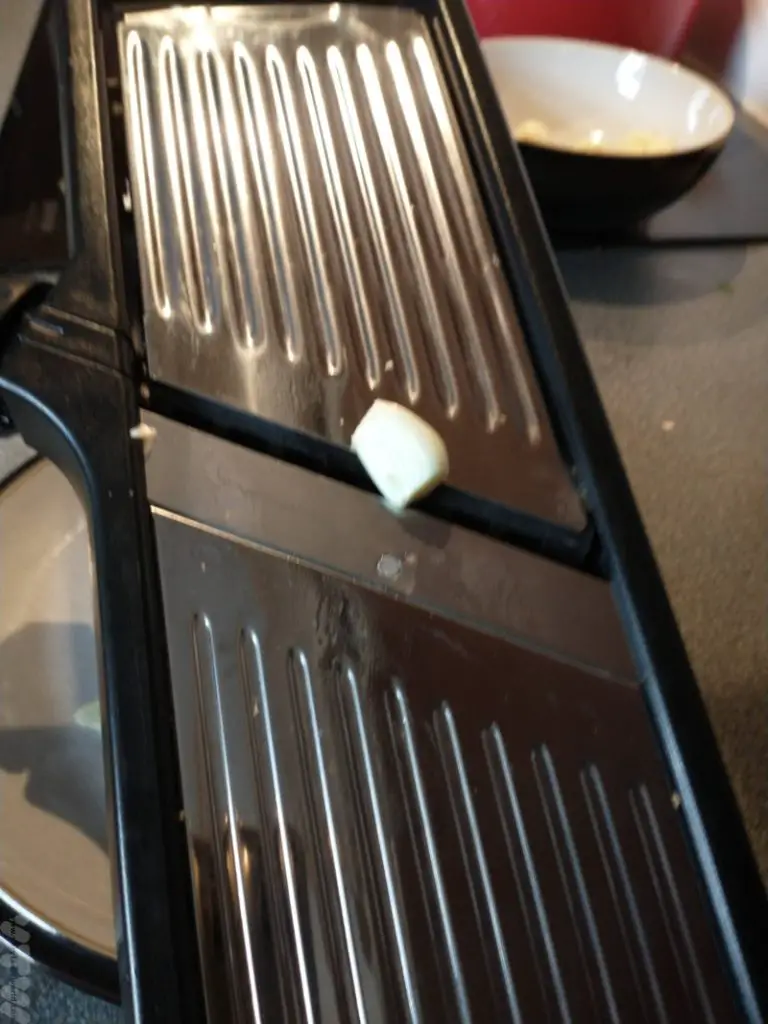
If using a mandolin, be really careful. Being clumsy cooks, we use a knife glove which means that you can slice the garlic very close to the blade without risking sliced fingers. Bloody garlic pickle is not a good idea.
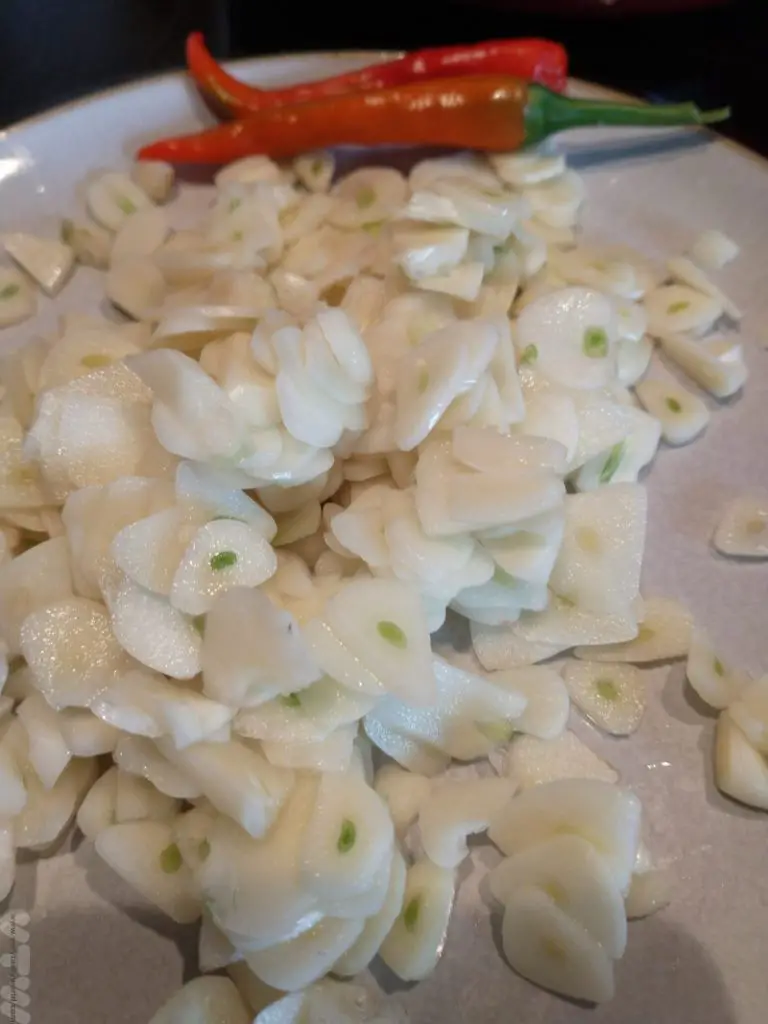
Place the sliced garlic, slice the chillies and add everything to the jar.
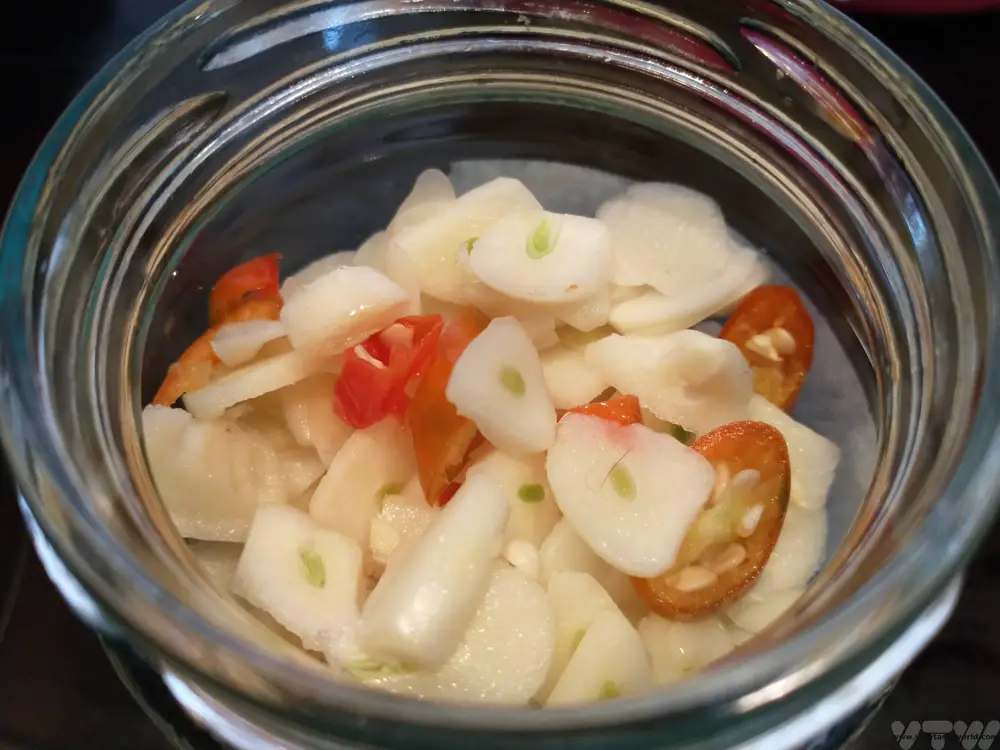
Top up with the vinegar. Add the sugar and salt.
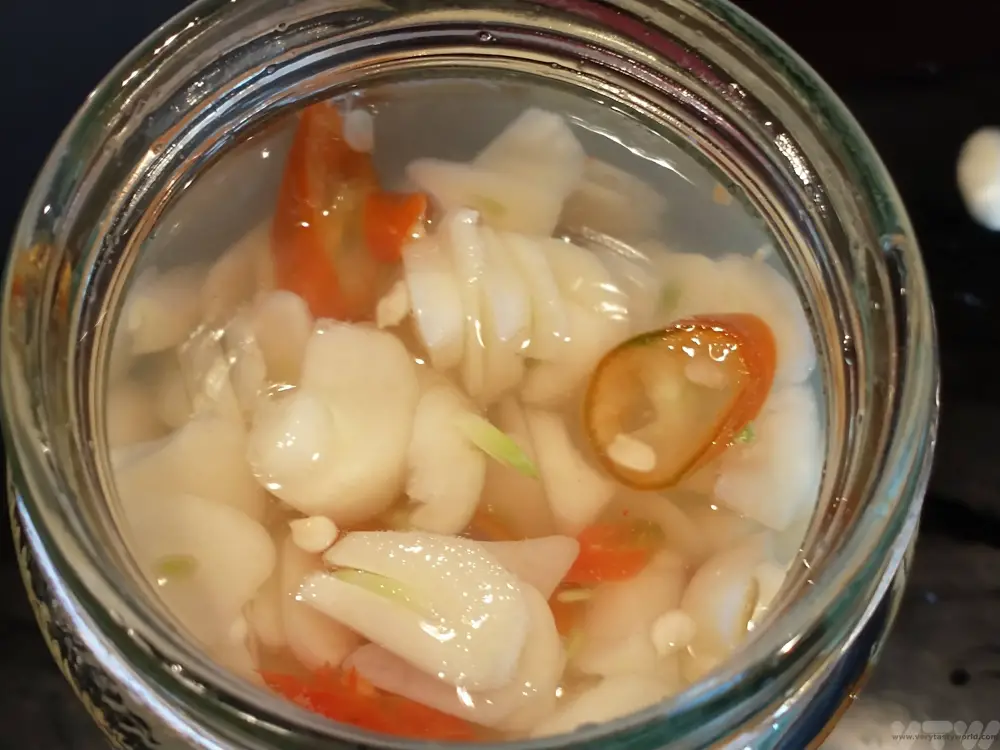
Shake the jar.
Leave to infuse for at least a week. The pickled garlic will last for months… but is likely to get scoffed much sooner. Also, because the vinegar is acidic you can add additional sliced garlic or another chilli as you use up the existing condiment.
Although this dish goes really well with Phở and Bún Huế dishes, we’ve also used it to add a bit of zing to Vietnamese summer rolls.
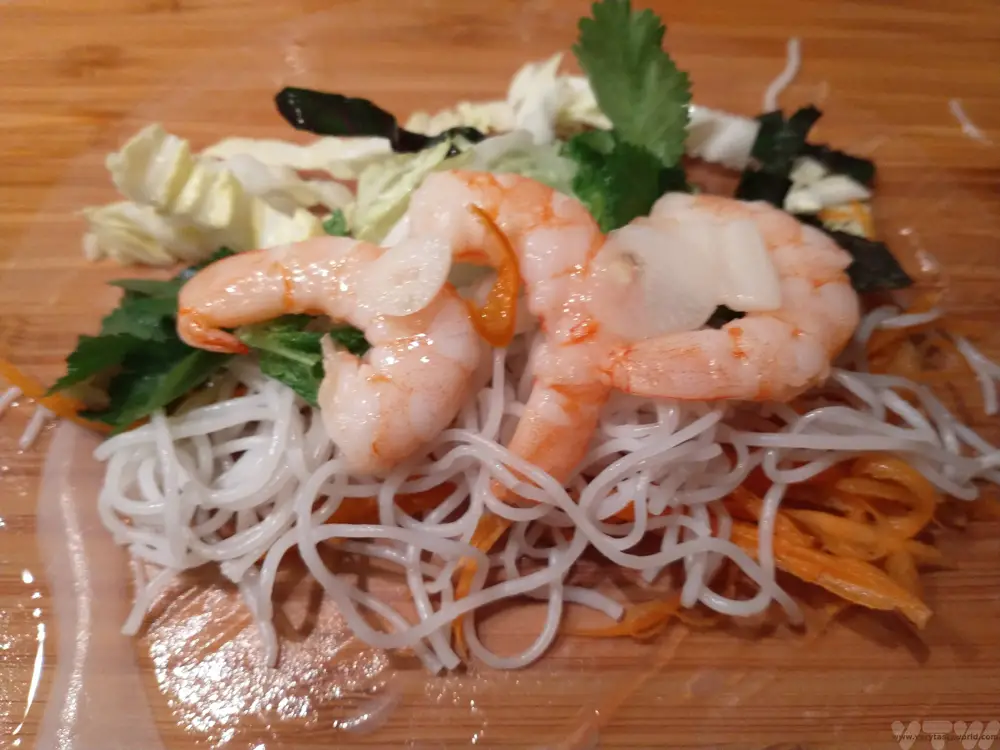
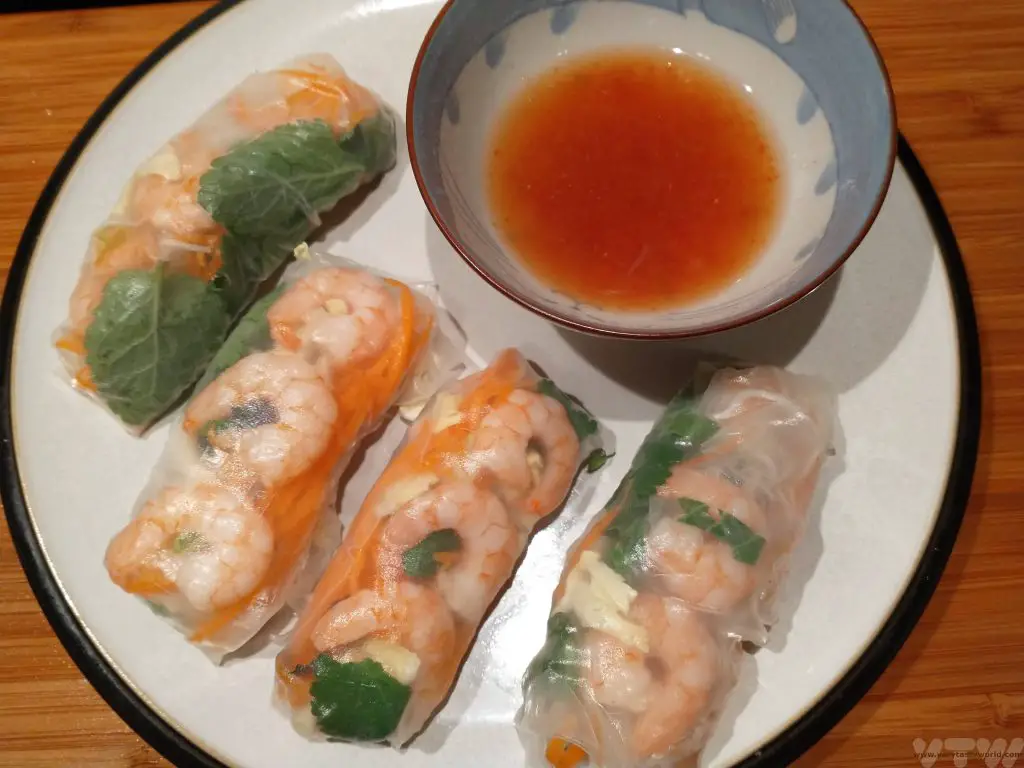
And this condiment isn’t just for Vietnamese cookery. We use this pickle to garnish soups – this is a home-made vegetable soup.
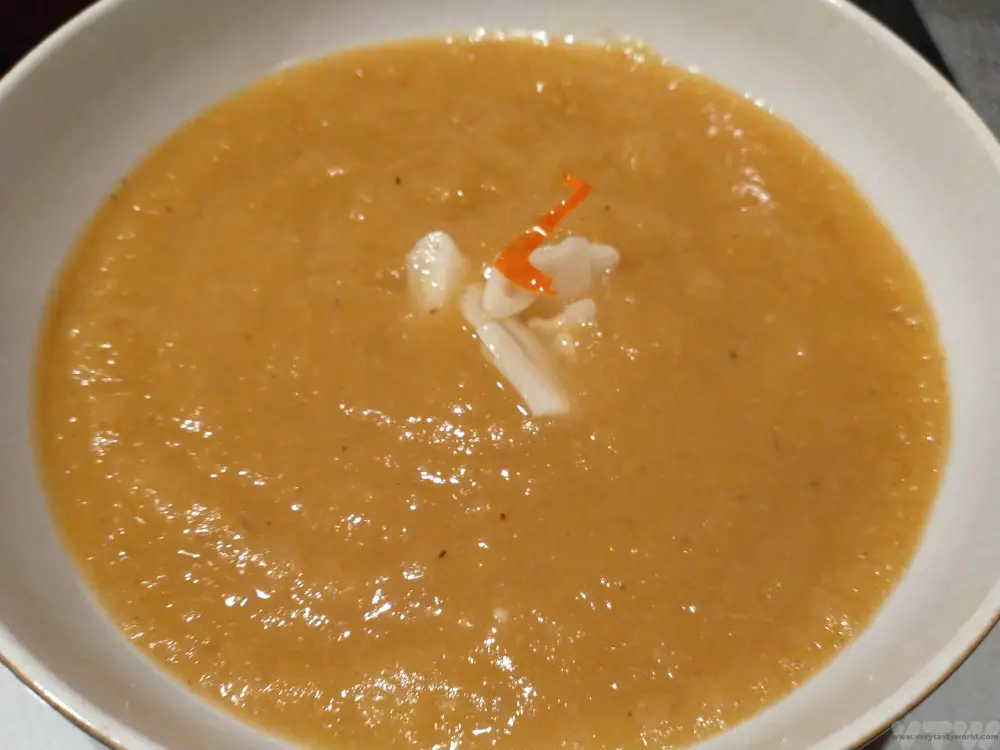
Or it can be used in a meat dish – these are glazed pork belly bites. Just a slice or two atop really cuts through the richness of the meat.
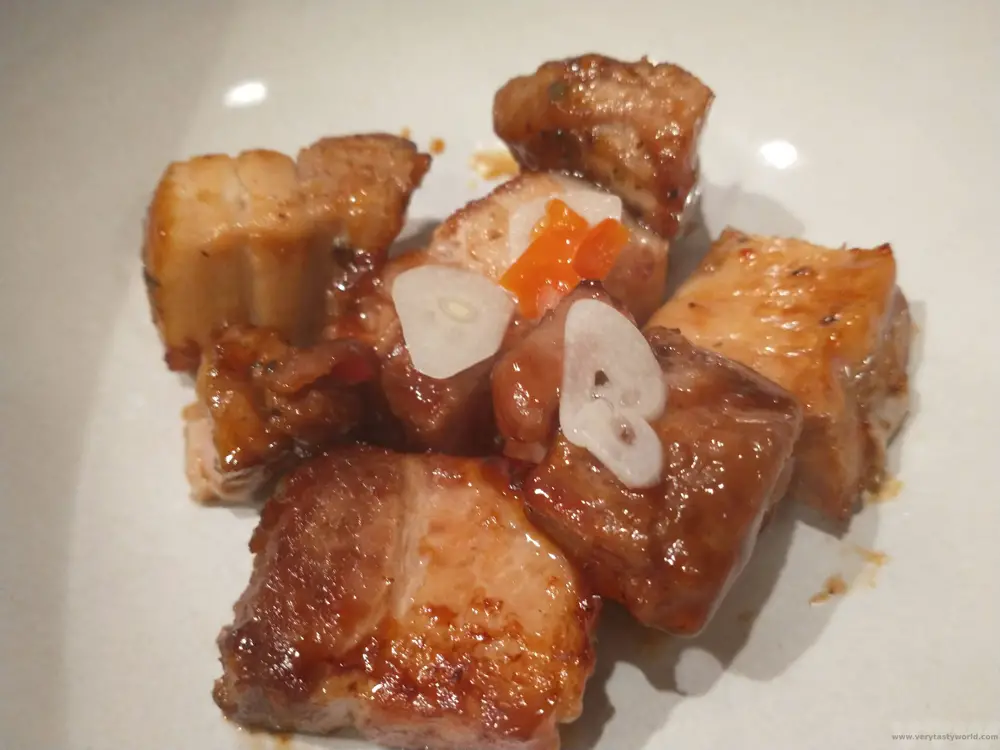
Related Posts You May Enjoy

- RECIPE Oyakodon Donburi
- Zero Waste Recipes Before Your Holiday
- RECIPE: Vegetable Biryani Tamil Nadu Style
- RECIPE: Vegan Wild Garlic Pesto
- Recipe: Venetian Pasta Sauce
- RECIPE: Biryani Raita Recipe
- RECIPE: How to Make Costa Rica’s Gallo Pinto
- Recipe: Japanese Simmered Pork Belly – Buta no Kakuni
- RECIPE: How to Make Umeboshi
Please note that this post contains some affiliate links. If you click the link and decide to make a purchase we will earn a small commission, at no cost to you, which helps towards running this site.



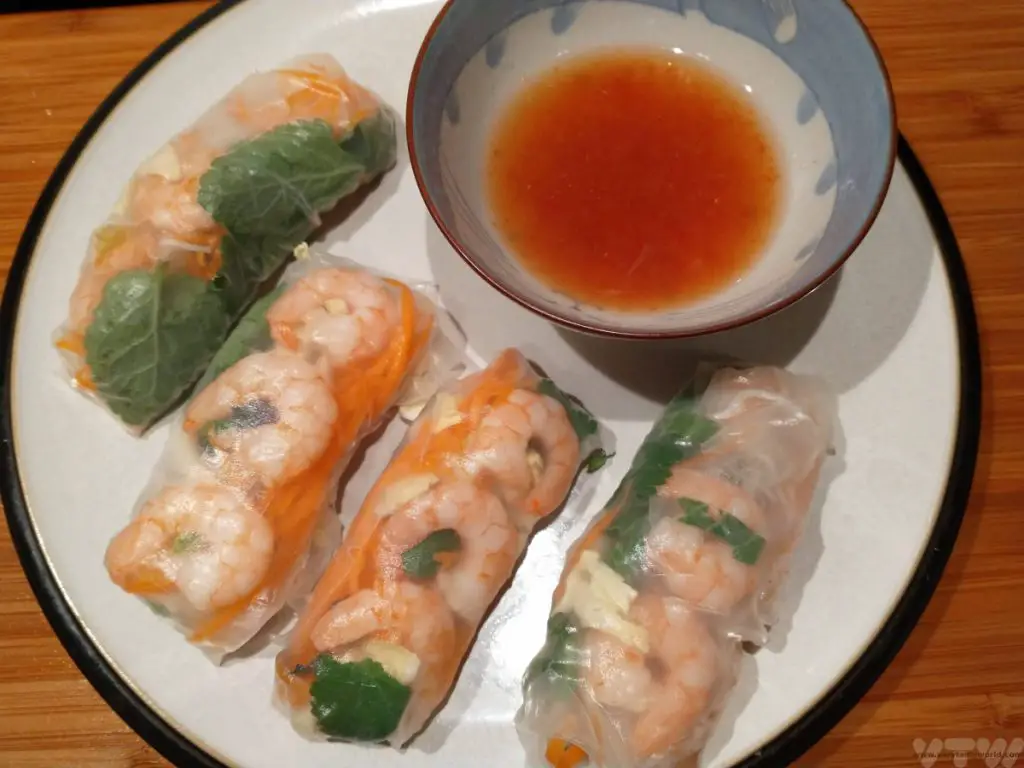
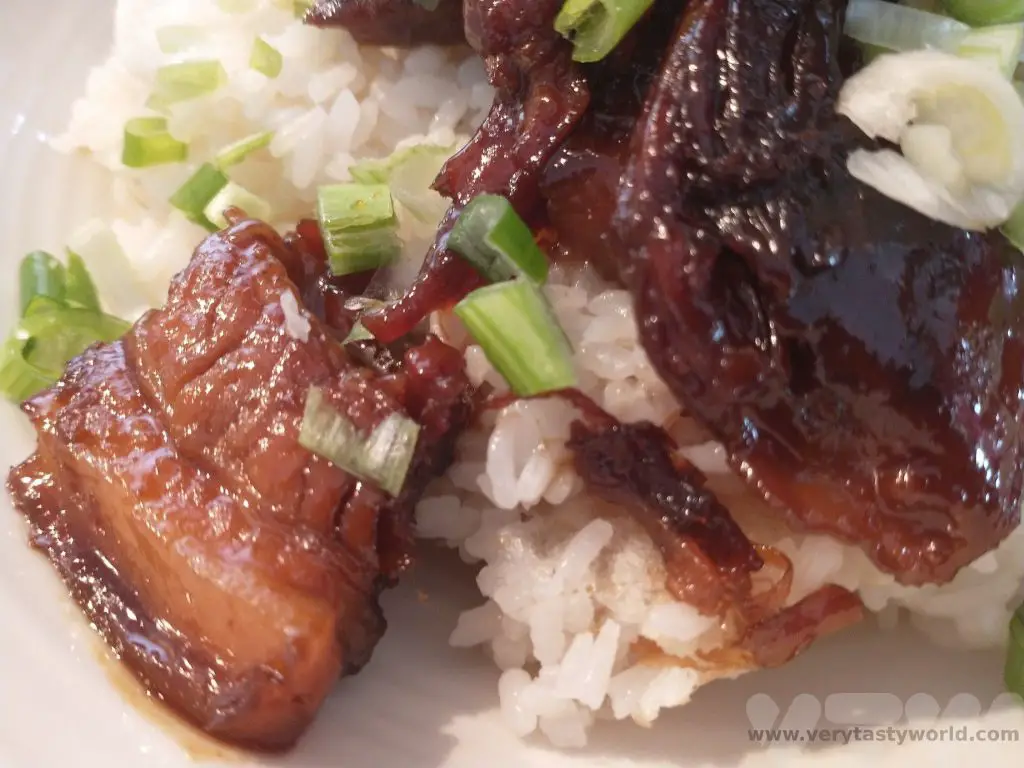
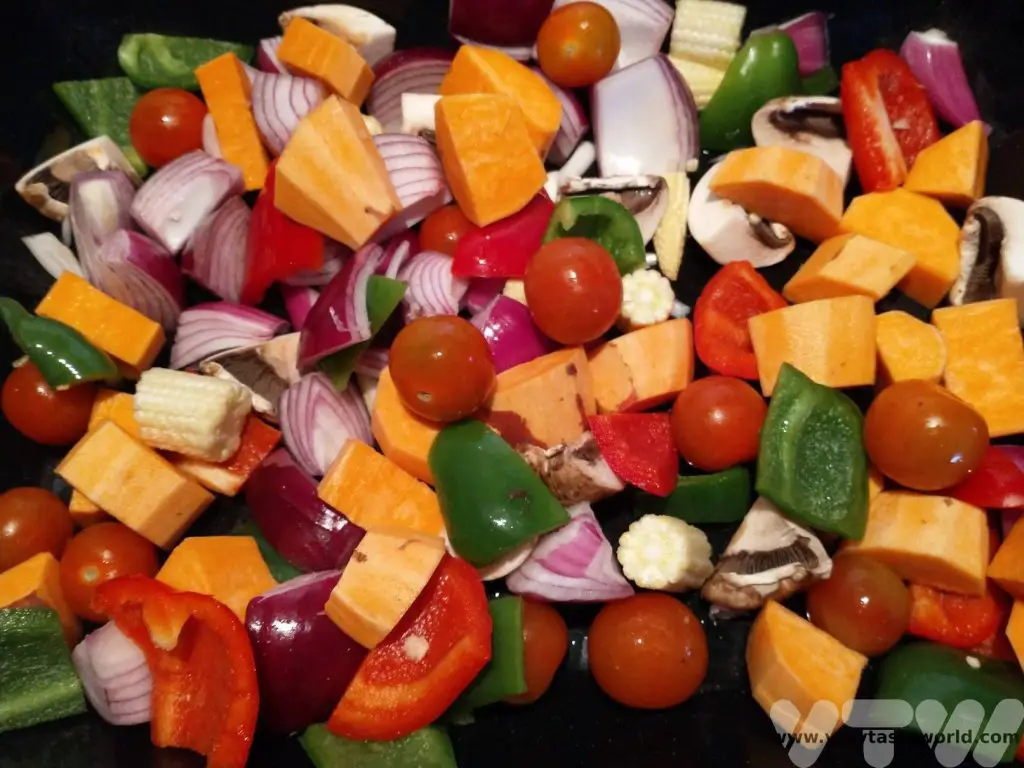
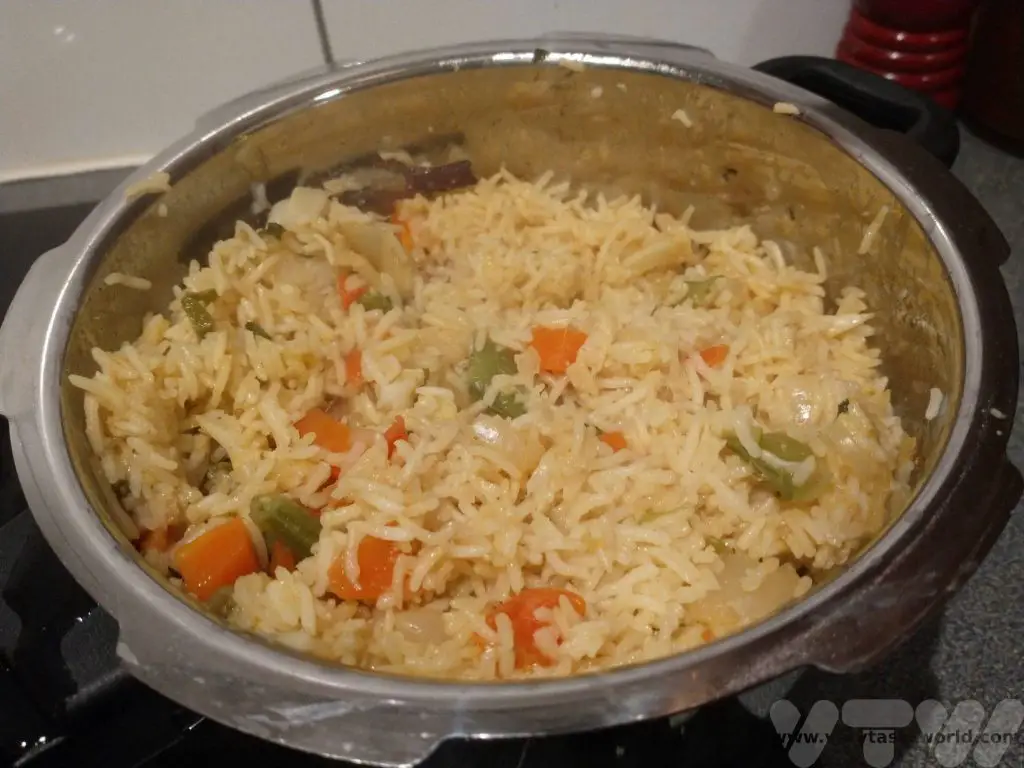
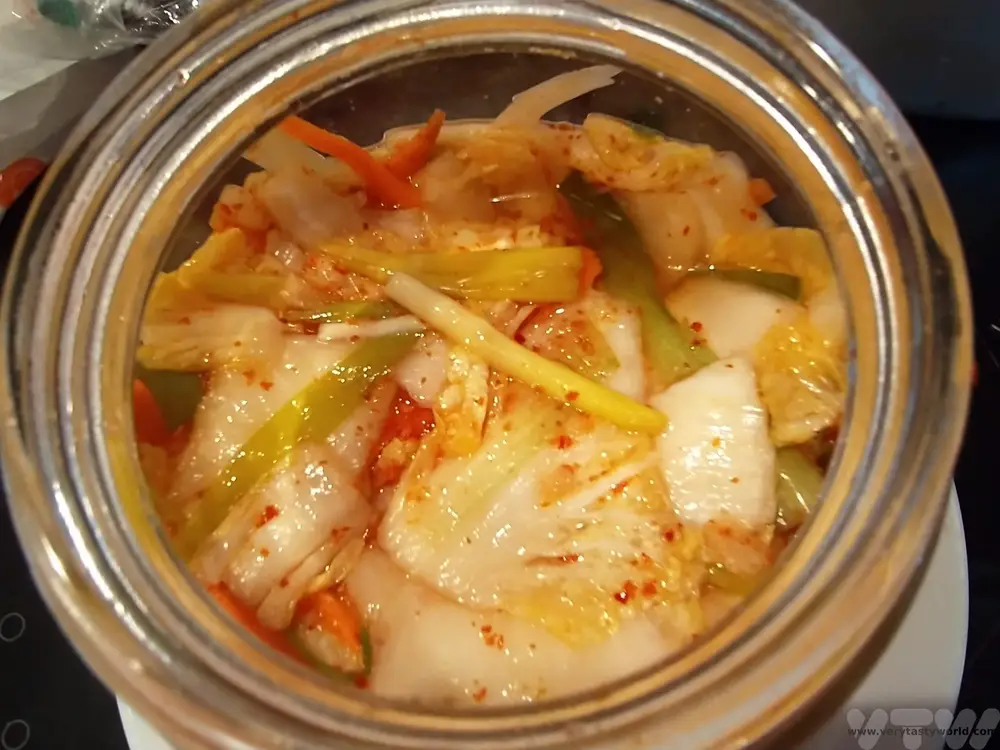
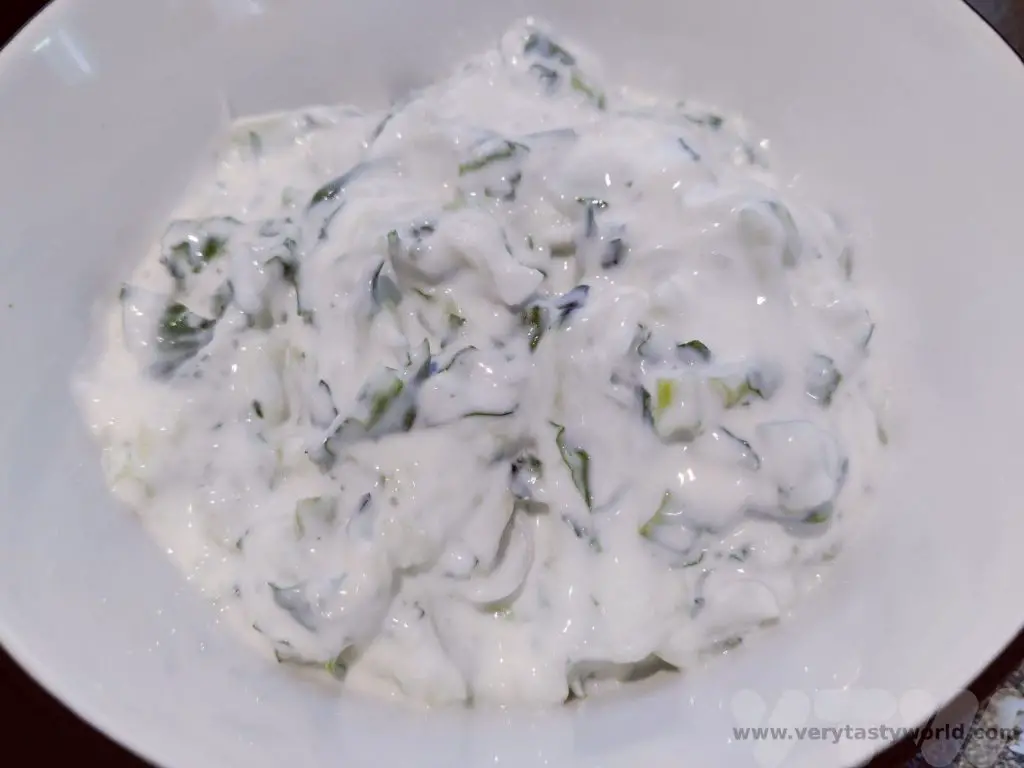

















Will definitely try this at home.
That’s great to hear! Do let us know how you get on…
[…] We also added some slices of home-made pickled garlic to some of the rolls to add an extra zingy […]
[…] RECIPE: Vietnamese Pickled Garlic […]